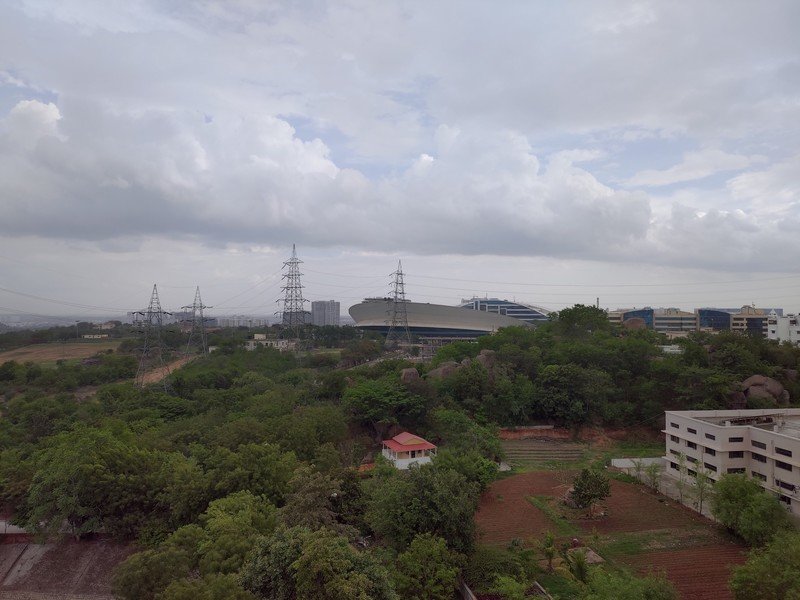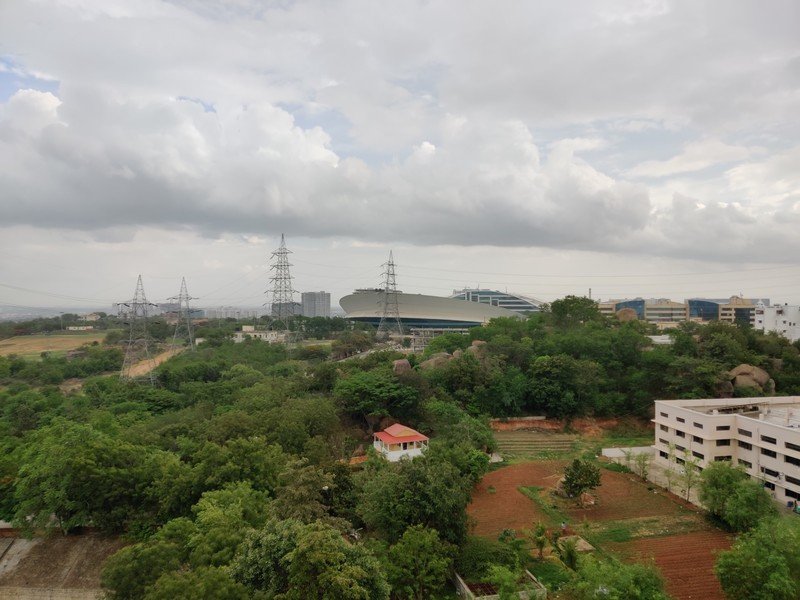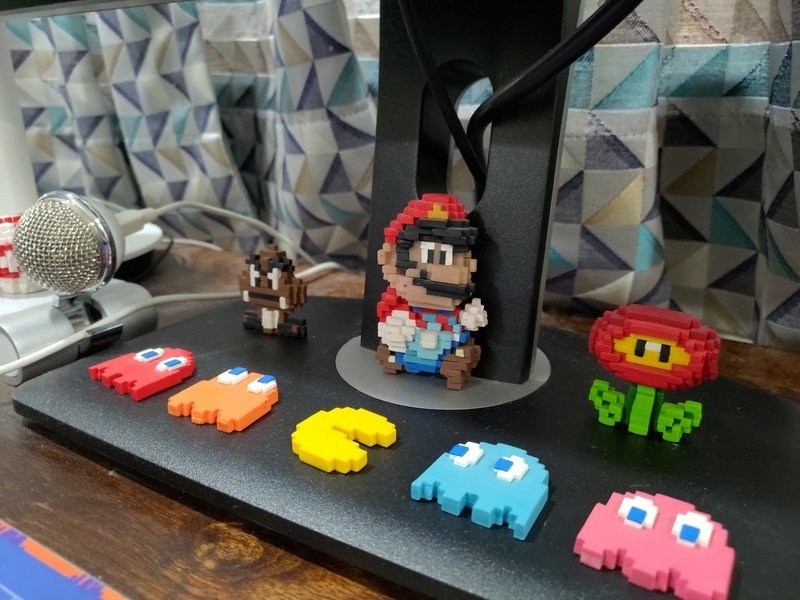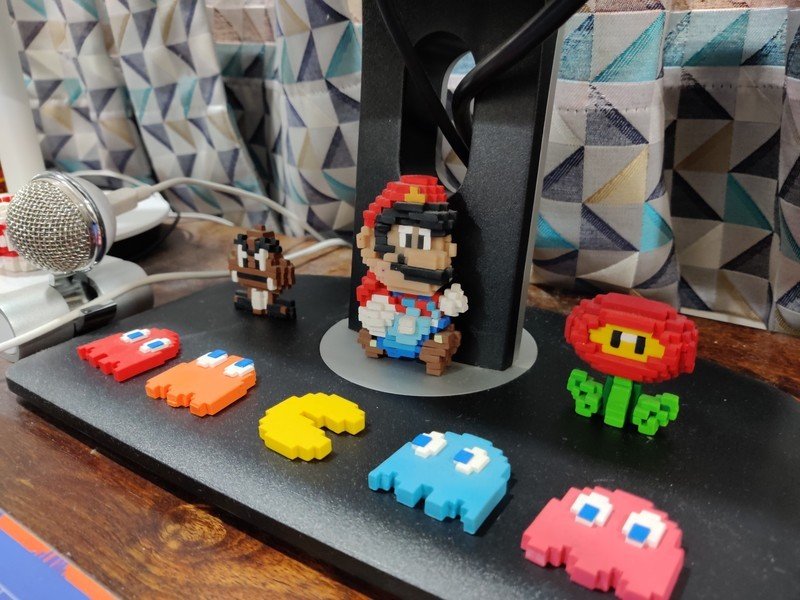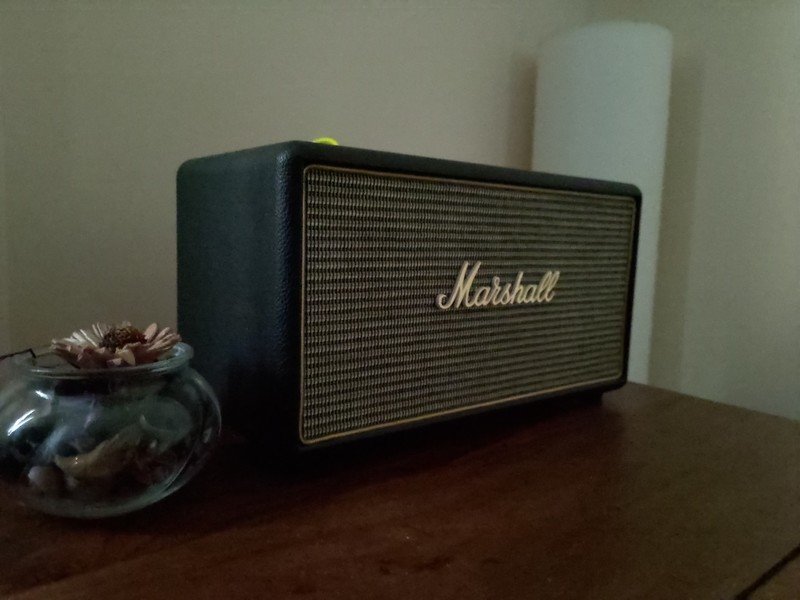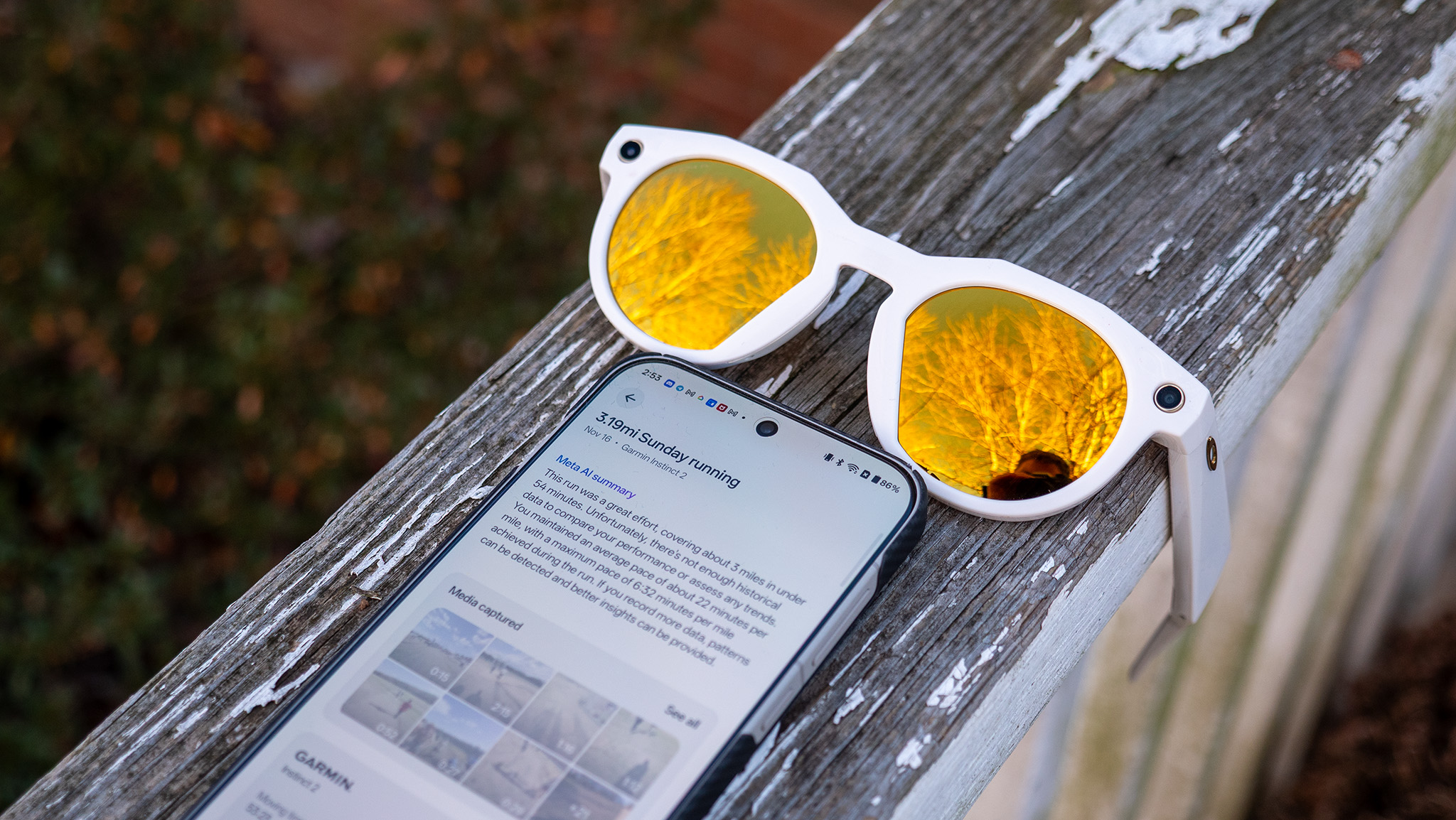ASUS ZenFone 6 vs. OnePlus 7: Which should you buy?
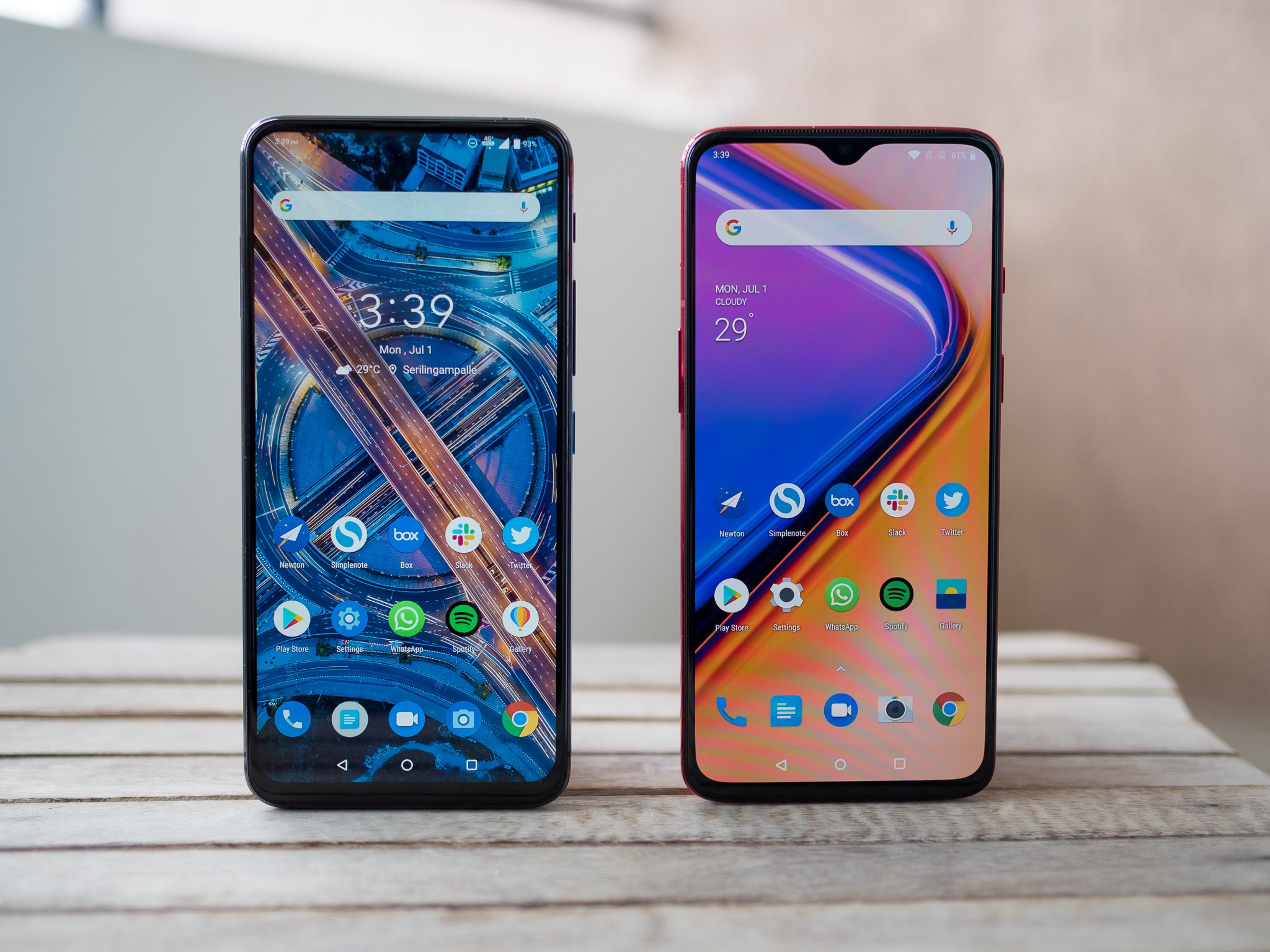
ASUS ZenFone 6
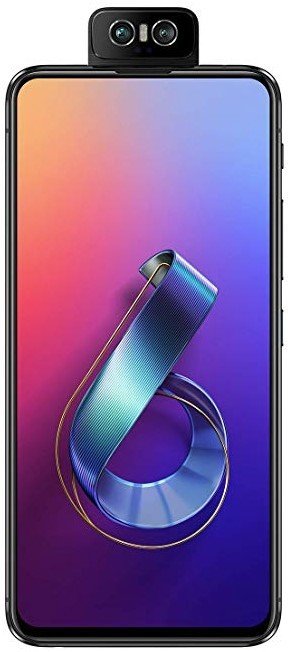
With the ZenFone 6, ASUS has created the perfect affordable flagship. The rotating camera design eliminates the cutout, the internal hardware is the latest available today, the 48MP camera takes excellent photos, and the battery life is outstanding. The interface doesn't have any bloat, and you even get a 3.5mm jack and a dedicated MicroSD slot.
ASUS ZenFone 6
Rising to the top
OnePlus 7
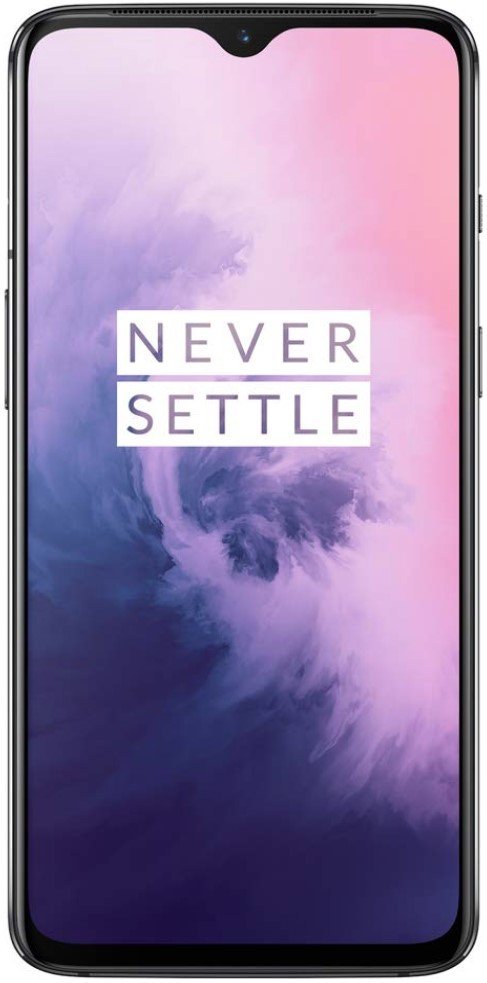
The OnePlus 7 has the same chassis and most of the same specs as the OnePlus 6T, but it has the upgrades that matter. There's a new 48MP camera at the back, Snapdragon 855 under the hood, and stereo speakers up front. Combine that with the reliability of OxygenOS, and you get one of the best value flagships around.
OnePlus 7
Not quite there
Like the last few generations, OnePlus is fielding a strong phone in the OnePlus 7. The design may not have changed from last year's 6T, but the internals have picked up an upgrade, and there's now a 48MP camera at the back. ASUS, meanwhile, has had a rethink about its strategy in this segment and is following up the ZenFone 5z with its most ambitious device yet.
ASUS shows that it can dominate OnePlus in this segment
You know how the story goes in the affordable flagship segment: you get a device that costs roughly half as much as the equivalent Samsung, Google, or Huawei flagship, with brands making a few tradeoffs to get to that price point. Those usually include lack of water resistance or wireless charging, an FHD+ panel instead of a QHD+ screen, and other omissions.
OnePlus has mastered this game over the last three years, and it continues to be the company to beat in the value space. But ASUS showed that it was able to deliver a device that can go head-to-head with the OnePlus 6 in the ZenFone 5z, and it is now offering another strong contender in the ZenFone 6.
The ZenFone 6 offers so much more for your money, including an all-screen design and class-leading battery life.
The ZenFone 6 is ASUS' most ambitious device to date, featuring a new rotating camera module that flips to the front when you need to take a selfie. ASUS also added a monstrous 5000mAh battery, upgraded the internal hardware to the Snapdragon 855, and retained the headphone jack and the MicroSD card slot. Oh, and there's even a tiny LED notification light hidden away on the top bezel.
Meanwhile, OnePlus is playing the conservative game with the OnePlus 7. The OnePlus 7 Pro has all the new goodies — including a tremendous 90Hz display — with the standard version featuring the same chassis as last year's OnePlus 6T and most of the same internal hardware. There are just four changes from the OnePlus 6T to the OnePlus 7: the Snapdragon 855, UFS 3.0 storage module, 48MP camera at the back, and stereo speakers.
Get the latest news from Android Central, your trusted companion in the world of Android
Think of the OnePlus 7 as the T variant of the OnePlus 6T, because that's what it ultimately is. So even at a glance, it's easy to see that the ZenFone 6 has much more to offer. You're getting an all-screen design, a headphone jack and MicroSD slot, the same 48MP rear camera for selfies, and a 5000mAh battery for two-day battery life.
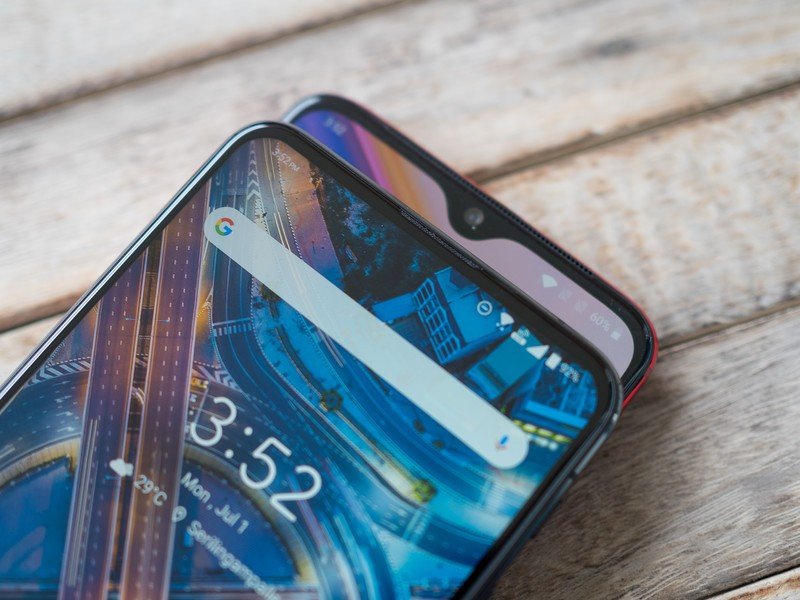
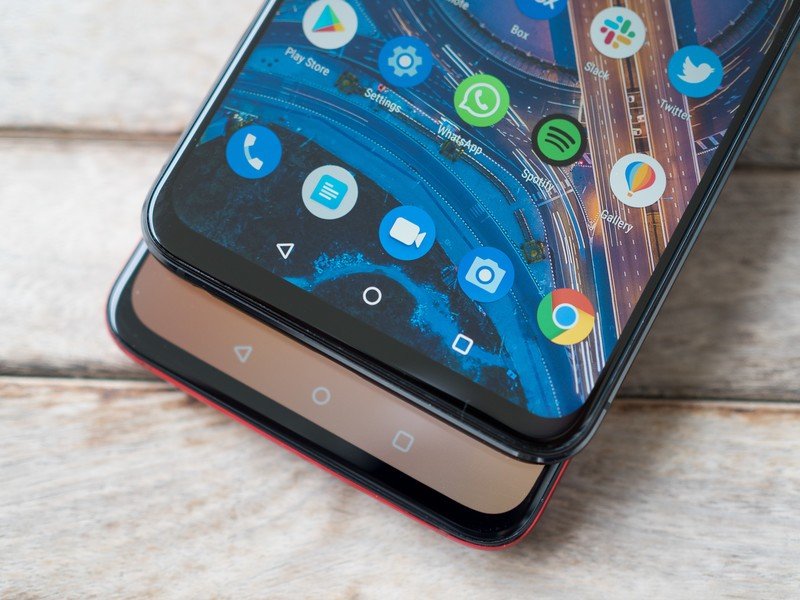
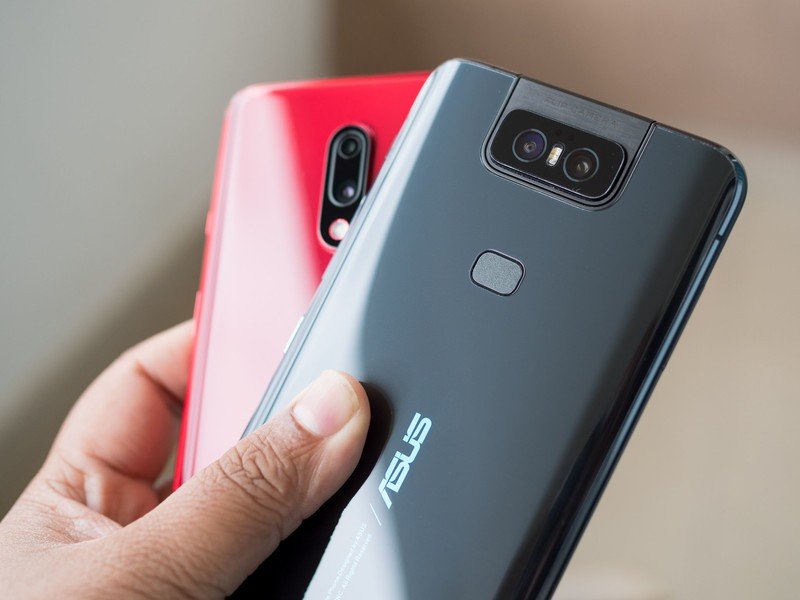
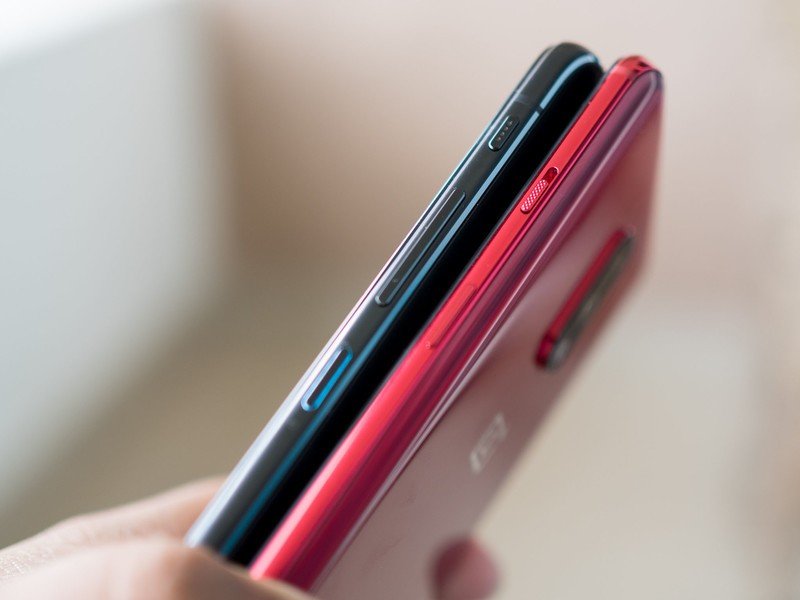
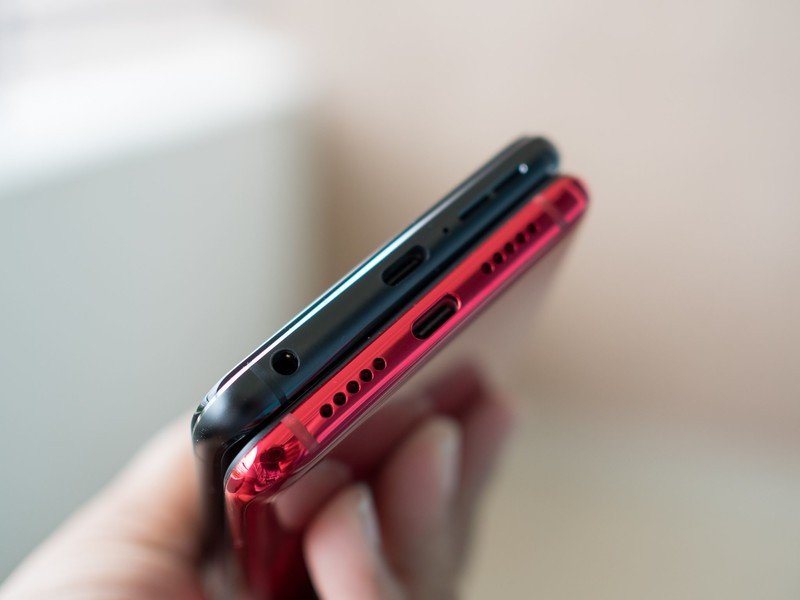
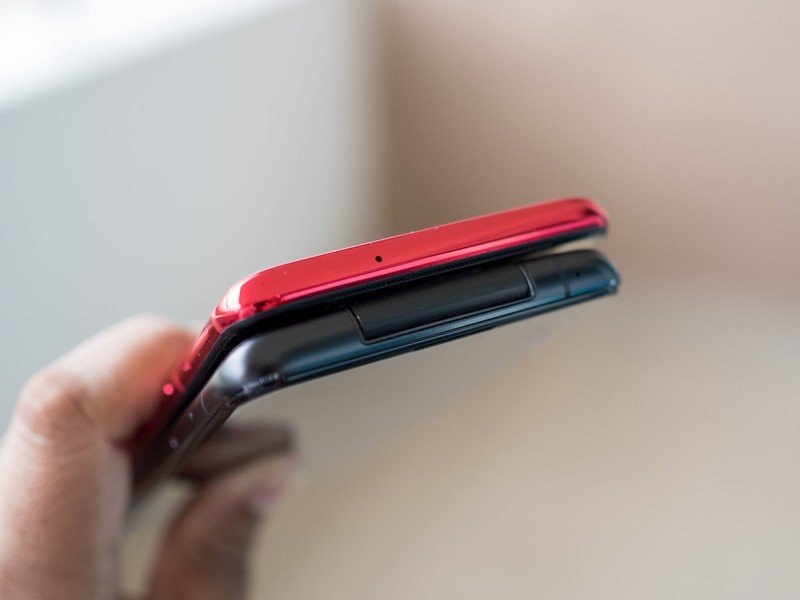
I'll start with that 5000mAh battery because it dominates every other device in this segment. I routinely got over two days' worth of use from a full charge, with screen-on-time of over nine hours. I ended up using the ZenFone 6 as a hotspot on a recent vacation, and even then the phone managed to last two days. The only other flagship that comes anywhere close to the ZenFone 6 in this regard is the Huawei P30 Pro, but it also costs twice as much.
Another standout feature is the 3.5mm jack and MicroSD slot, both of which are missing on the OnePlus 7. It says a lot about the state of the smartphone industry in 2019 that I have to point out a phone that has a headphone jack, but if you're interested in wired audio, the ZenFone 6 is a great choice. You even get a pair of earbuds in the box that are tuned by 1More.
Snapdragon 855 and generous RAM means you're not going to see any slowdowns on either phone.
On the subject of audio, the ZenFone 6 has stereo speakers at the front — just like the OnePlus 7 — and although the sound that comes out of the phone is astonishingly loud, it is neither clear nor detailed. The speakers on the OnePlus 7 do a much better job in this regard.
Both phones have roughly similar dimensions, with the ZenFone 6 coming in a millimeter thicker because of that huge 5000mAh battery. They both have a 6.4-inch display as well, with OnePlus offering an AMOLED panel and ASUS sticking with an LCD screen. The LCD panel does get bright enough for outdoor use, but it isn't as vibrant as the OnePlus 7's Optic AMOLED display. I had to manually adjust the color temperature on the ZenFone 6, and even then colors looked washed out.
Both phones are equally matched when it comes to the hardware side of things. They're both powered by the Snapdragon 855 chipset, and come with 6GB of LPDDR4X RAM as standard. ASUS is trying to undercut OnePlus in India, so there's a base 64GB variant of the phone that costs just ₹32,999 ($480), but in most global markets the ZenFone 6 will come with 128GB as standard, just like the OnePlus 7.
The latest Qualcomm chipset coupled with generous RAM means you're not going to see any slowdowns on either phone. The OnePlus 7 feels marginally faster just because of how well optimized OxygenOS is, but the ZenFone 6 is no slouch — it holds up to the OnePlus 7 in day-to-day use.
| Category | ASUS ZenFone 6 | OnePlus 7 |
|---|---|---|
| Operating system | Android 9.0 Pie | Android 9.0 Pie OxygenOS 9.5.5 |
| Display | 6.4-inch IPS LCD, 2340x1080 (19.5:9) HDR10, Gorilla Glass 6 | 6.41-inch Optic AMOLED, 2340x1080 (19.5:9) HDR10, Gorilla Glass 6 |
| Chipset | Snapdragon 855 1 x 2.84GHz Kryo 485 3 x 2.41GHz Kryo 485 4 x 1.78GHz Kryo 485 Adreno 640 7nm | Snapdragon 855 1 x 2.84GHz Kryo 485 3 x 2.41GHz Kryo 485 4 x 1.78GHz Kryo 485 Adreno 640 7nm |
| RAM | 6GB/8GB | 6GB/8GB |
| Storage | 64GB/128GB/256GB | 128GB/256GB |
| MicroSD slot | Yes (Up to 1TB) | No |
| Rear camera 1 | 48 MP, f/1.8 Dual Pixel PDAF | 48MP, f/1.6 1.4um, OIS Dual Pixel PDAF |
| Rear camera 2 | 13MP, f/2.4 | 5MP, f/2.4 |
| Front camera | Same as rear camera | 16MP, f/2.0 |
| Connectivity | Wi-Fi ac 2x2 MIMO, Bluetooth 5.0 FM radio AptX HD, NFC, A-GPS | Wi-Fi ac 2x2 MIMO, Bluetooth 5.0 AptX HD, NFC, A-GPS |
| Audio | 3.5mm jack Stereo speakers | USB-C Stereo speakers |
| Battery | 5000mAh | 3700mAh |
| Charging | USB-C at 18W 10W reverse charging | USB-C at 20W |
| Water resistance | None | None |
| Security | Rear fingerprint | In-display fingerprint (optical) |
| Dimensions | 159.1 x 75.4 x 9.2 mm 190g | 157.7 x 74.8 x 8.2mm 182g |
| Colors | Midnight Black, Twilight Silver | Mirror Gray, Red (China and India) |
A different take on the camera cutout
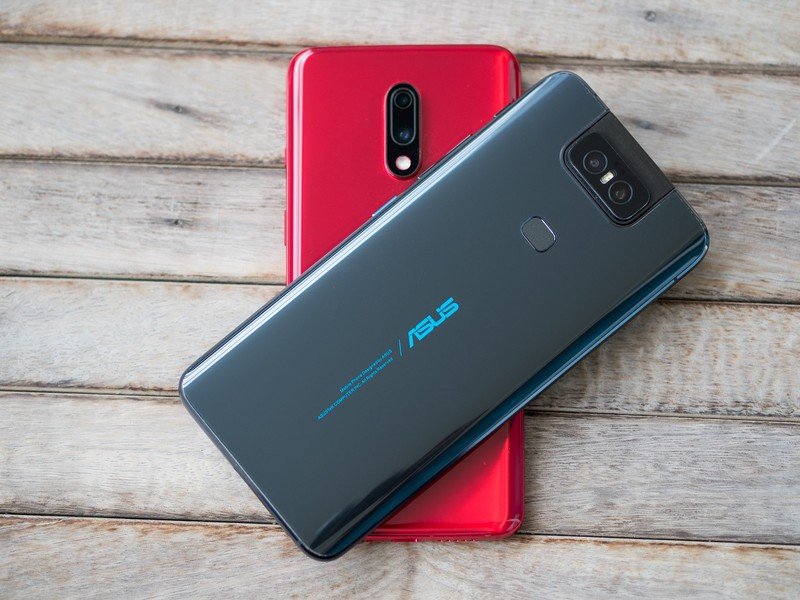
The marquee feature on the ZenFone 6 is the rotating camera, which flips over to the front when you want to take selfies. The motorized mechanism is made up of 13 gears and lets you control the angle of the shot. You can even take vertical panoramas, and there's a decent motion tracking mode that automatically locks on to a subject.
The sheer number of things you can do with the camera on the ZenFone 6 makes it a standout option. The fact that you can take selfies with the primary 48MP camera makes all the difference in the world, and the phone does a fantastic job with portrait mode.
ZenFone 6 on the left, OnePlus 7 to the right.
The OnePlus 7 is using the same 48MP sensor as the ZenFone 6, and OnePlus is continually rolling out updates to enhance the image quality. Right now, the ZenFone 6 pulls ahead in outdoor shots, with better dynamic range, accurate colors, and more detail.
That said, the ZenFone 6 tends to wash out colors in artificial lighting, and there's also a lot of noise in the shots. The OnePlus 7 does a better job in low or artificial lighting, with vibrant colors and plenty of detail.
Clean software is the best software
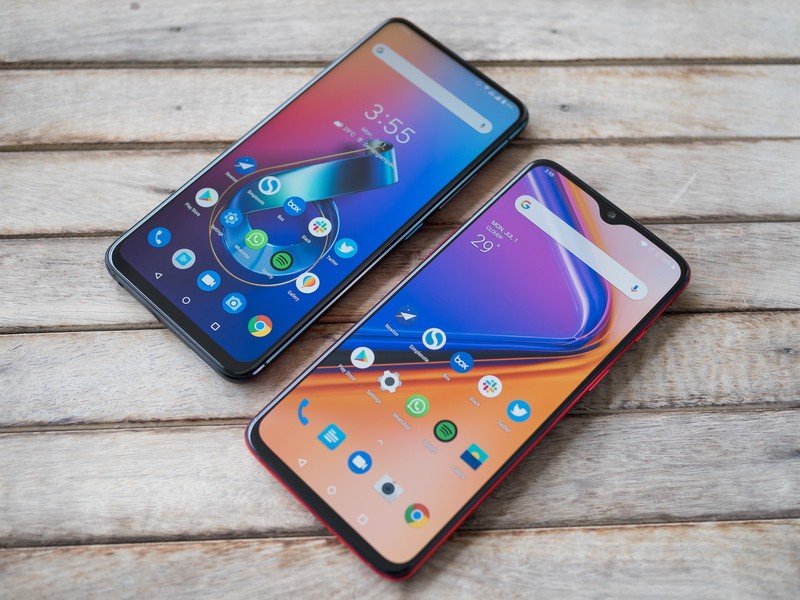
ASUS came under a lot of criticism in previous years for the sheer amount of bloat in ZenUI, and the manufacturer has done a great job culling the extraneous additions. The version of ZenUI that comes with the ZenFone 6 is nigh on indistinguishable from pure Android or any Android One device, and that's a commendable feat.
As for OnePlus, OxygenOS continues to be a stellar custom skin. It does a great job balancing an extensive feature-set with an easy-to-learn interface, and I prefer it just because it feels a smidgen more refined.
The ZenFone 6 is the best deal you'll find in 2019
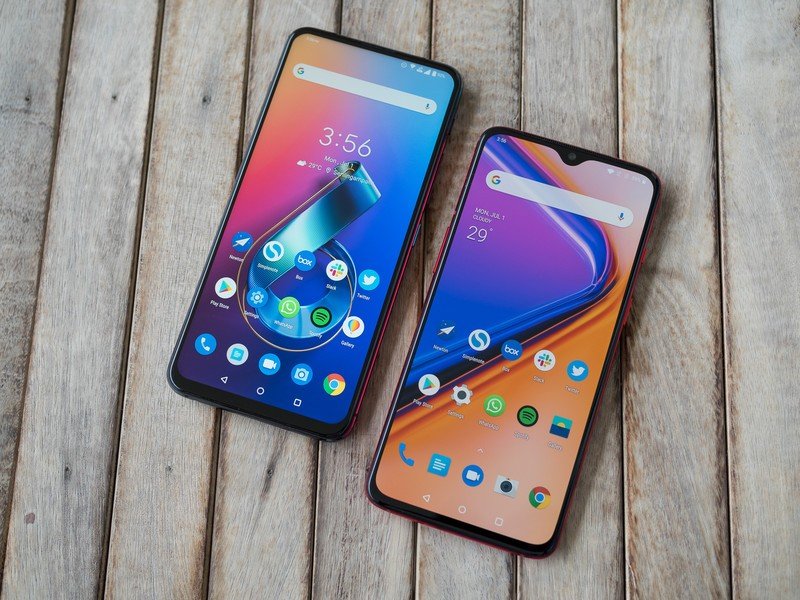
Ultimately, you're getting good value with both phones. OnePlus has been doing this for a long time now, and it knows how to build a solid value flagship. That said, the OnePlus 7 doesn't push the needle significantly, particularly when you factor in the amount of shared hardware with last year's 6T.
That's what makes the ZenFone 6 such an attractive option. ASUS managed to deliver a phone that outmatches the OnePlus 7 in several key areas, including battery life, value, design, and selfie quality. It's just a more well-rounded product, and the hardware on offer combined with the pricing makes it an exquisite offering.
Considering how much the ZenFone 6 costs, you're not going to find a better deal in the affordable flagship category in 2019. Don't get me wrong, the OnePlus 7 is an excellent device in its own right, but it isn't quite as good as the ZenFone 6.
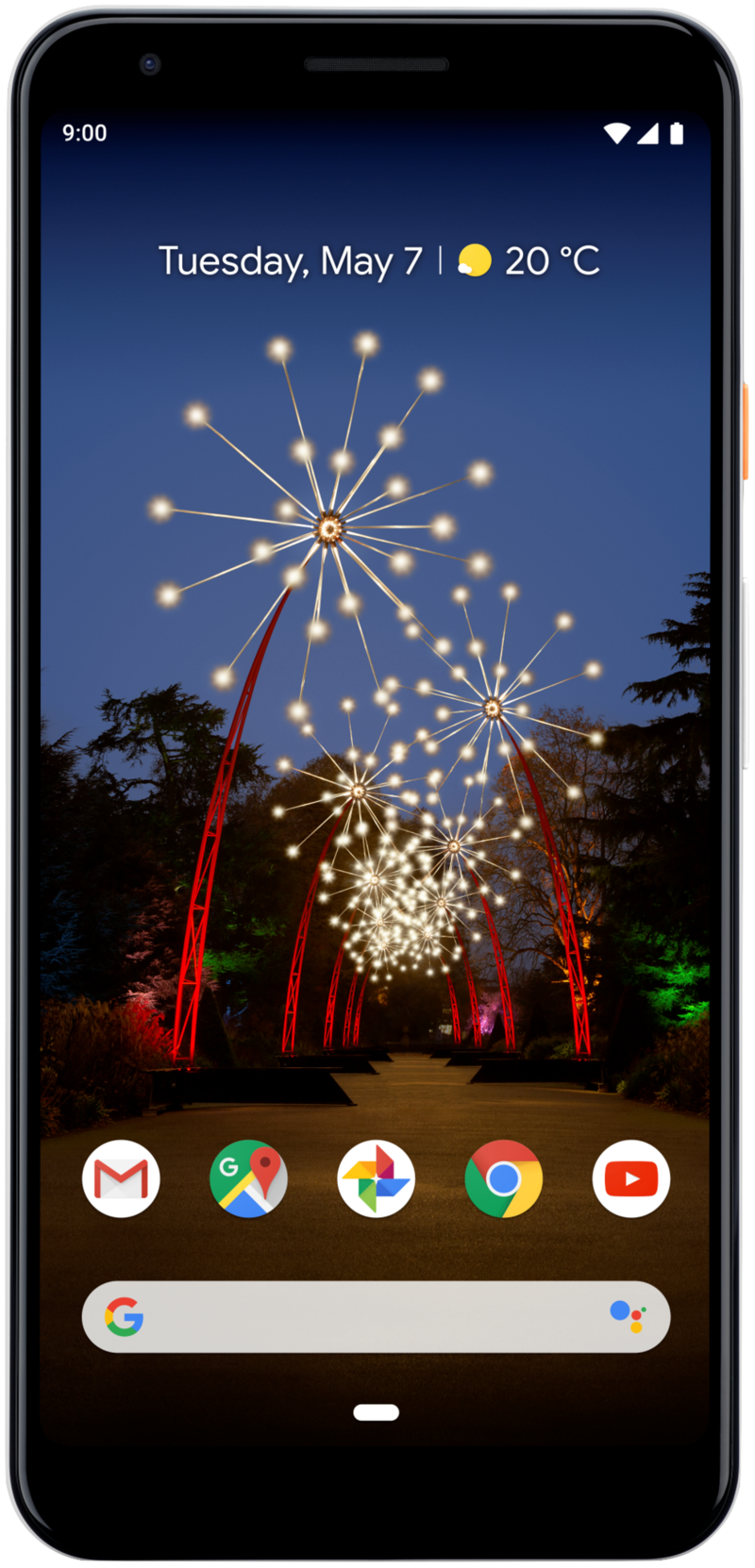
Latest internals, outstanding battery, unmatched value.
ASUS is onto a winner with the ZenFone 6. It delivers incredible battery life, the 48MP camera is great for selfies, and you get the latest hardware available today. Combine that with a user interface that's identical to pure Android, and you get one of the best phones in the market today.

Familiar design with key upgrades.
OnePlus hasn't made a lot of alterations to the OnePlus 7 on the design side of things, instead opting to focus on the internals. That's a smart move for the company as it allows it to save costs, but then again it leaves OnePlus vulnerable to devices like the ZenFone 6. Ultimately, in doing so little, OnePlus lost out to ASUS this year.

Harish Jonnalagadda is Android Central's Senior Editor overseeing mobile coverage. In his current role, he leads the site's coverage of Chinese phone brands, networking products, and AV gear. He has been testing phones for over a decade, and has extensive experience in mobile hardware and the global semiconductor industry. Contact him on Twitter at @chunkynerd.
